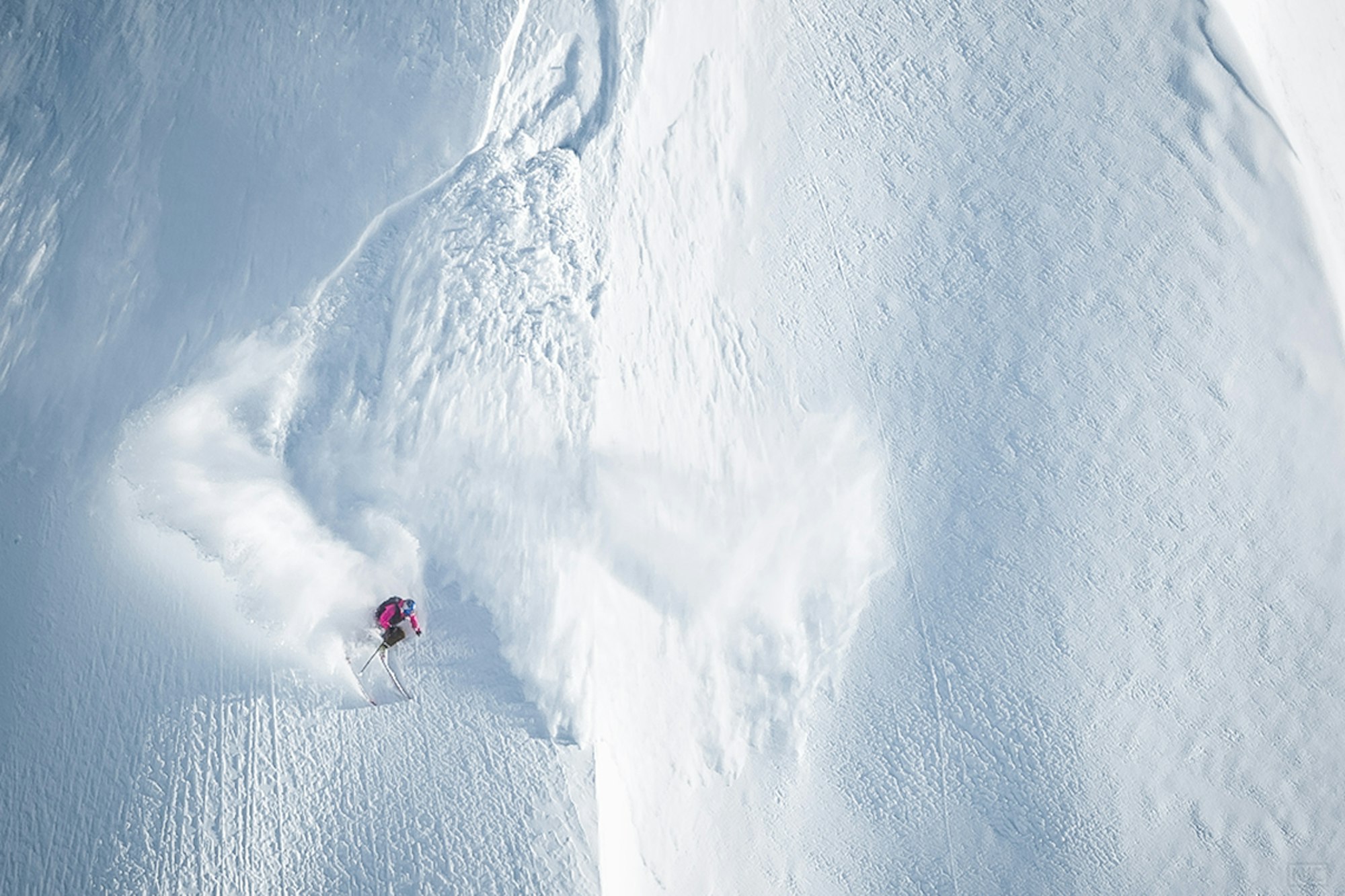If you ever thought about developing a meditation practice but were unsure of the benefits, big-mountain skier Angel Collinson might just be the inspiration you need to give it a try. The 2011 Freeride World Tour champion and Alaska’s newest resident believes we are all just one self-aware breath away from a deeper understanding of ourselves and an expansive connectivity with the world around us. For 27-year-old Collinson, the experience of skiing and meditation go hand-in-hand.
Approaching the steepest, most exposed lines in Alaska, in mountain ranges like the Neacola, Chugach and Talkeetna, Collinson often finds herself in a fleeting nirvana. Harmony, together with perseverance and respect, drive Collinson’s all-loving ethos, and it is from here that she achieves the physical, mental and spiritual wherewithal to ski some of the most ominous and challenging mountains in North America.
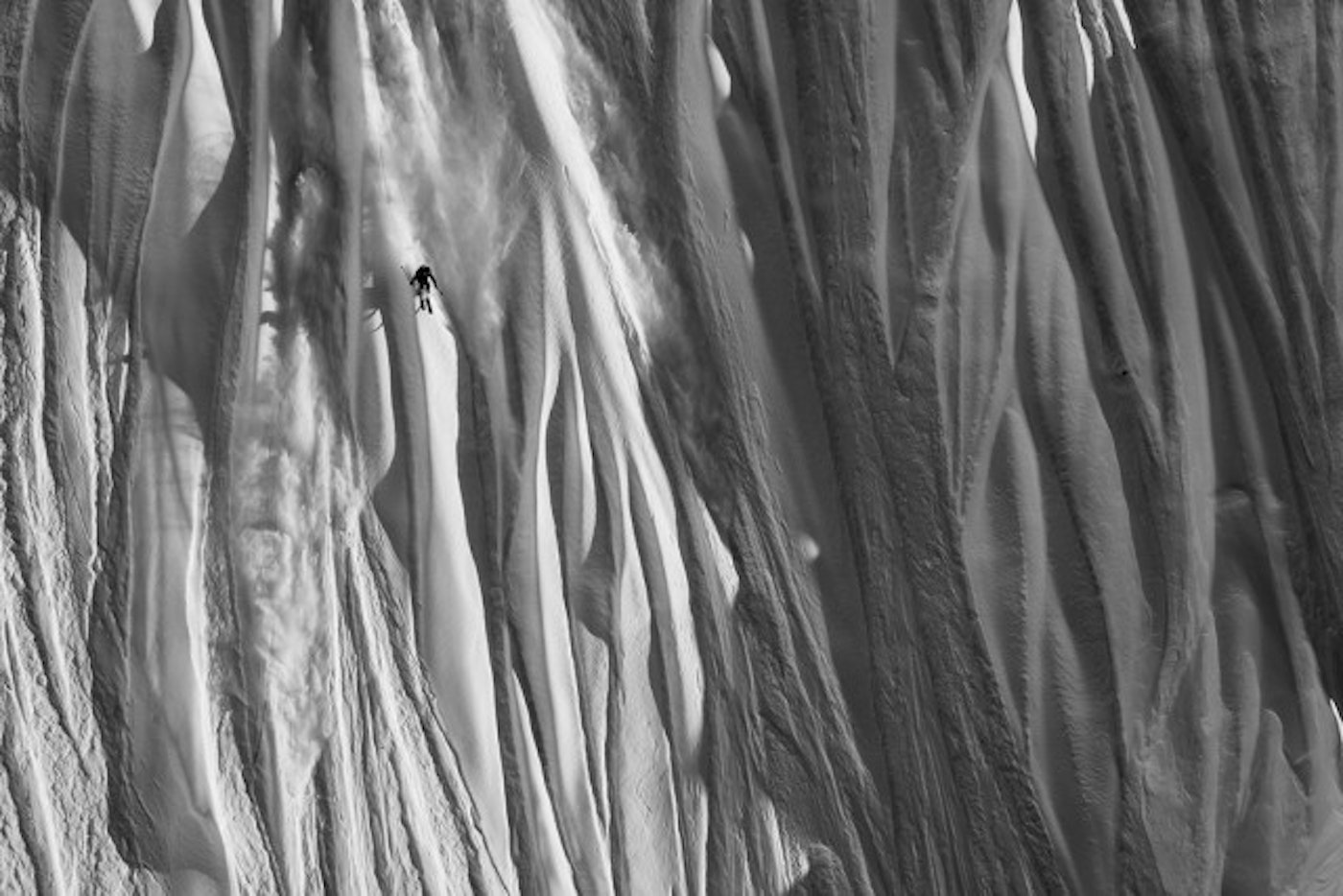
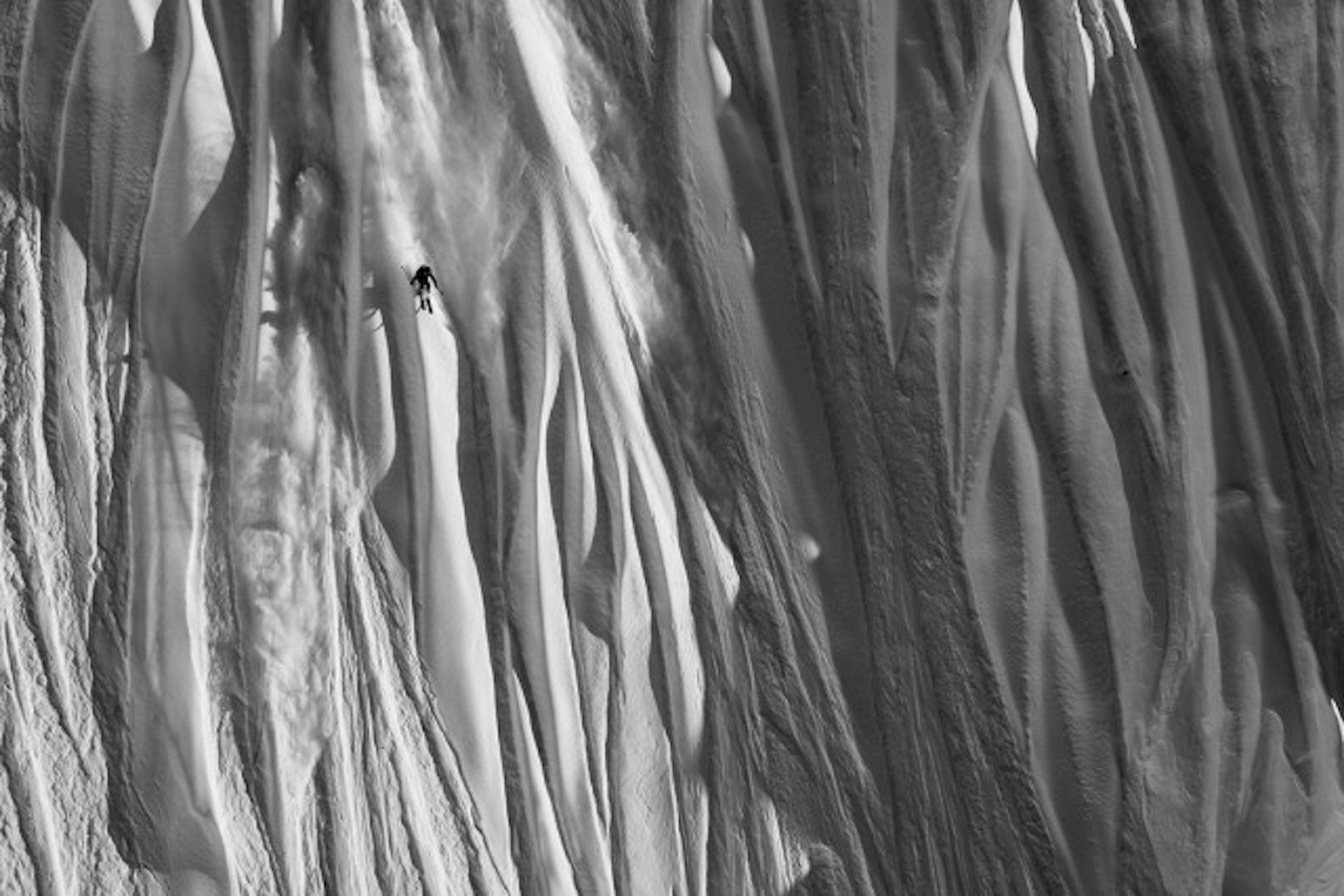
For how long have you been meditating?
Probably three, maybe four years. Like, pretty solidly.
What got you into it?
I’ve always been interested in it. I’ve always been drawn to Buddhism, actually. When I was younger, I paid attention to what the Buddhist monks did and read these books when I was probably 16 [years old]. One book was called, Awakening the Buddha Within.
What helped me [begin meditating] was starting really, really small. I had a really good friend who said: “Don’t have any expectations. You can’t win. You can’t fail at meditating. It’s just taking time for yourself. Start with one breath a day whenever you remember. Just start there.” I started with that… and it got me more in the habit.
Can you describe for me your experience meditating, and why it is important to you?
I really feel like it is one of the most powerful experiences we can have, where we feel really connected to something… in a deep and visceral way. I feel present, and it helps my mind slow down. I love this planet so much: I love trees, I love the way the leaves blow in the wind, I love feeling the wind going through my hair and maybe tickling my neck. I take the time, I appreciate it and it helps me calm down. [When I mediate], I feel a force bigger than me—whether you want to call it God or the universe or just life.
Can you compare how you feel meditating to how you feel skiing?
It’s a lot like the flow state: when you drop in and your mind just goes blank and you’re totally focused on just what’s in front of you and you’re not thinking about anything. In a similar way, I have that sense of peacefulness and clarity.
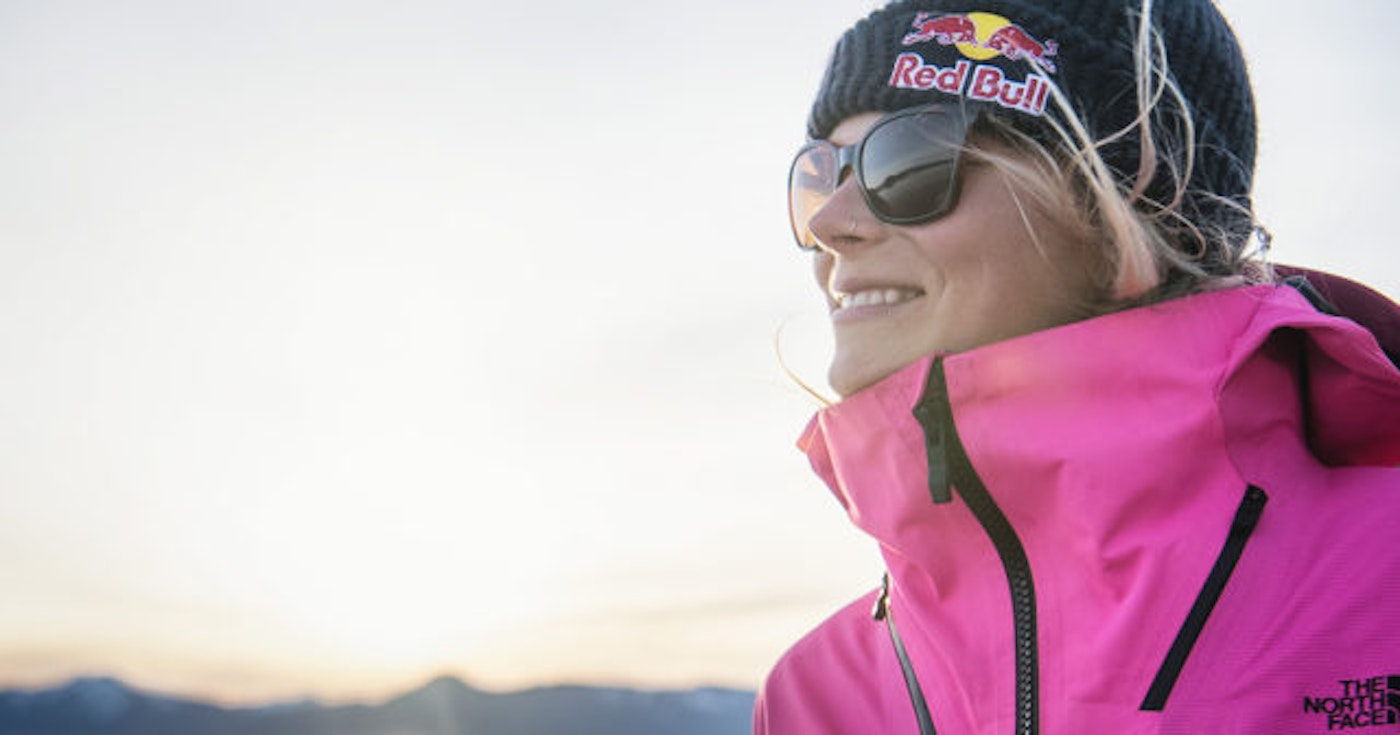
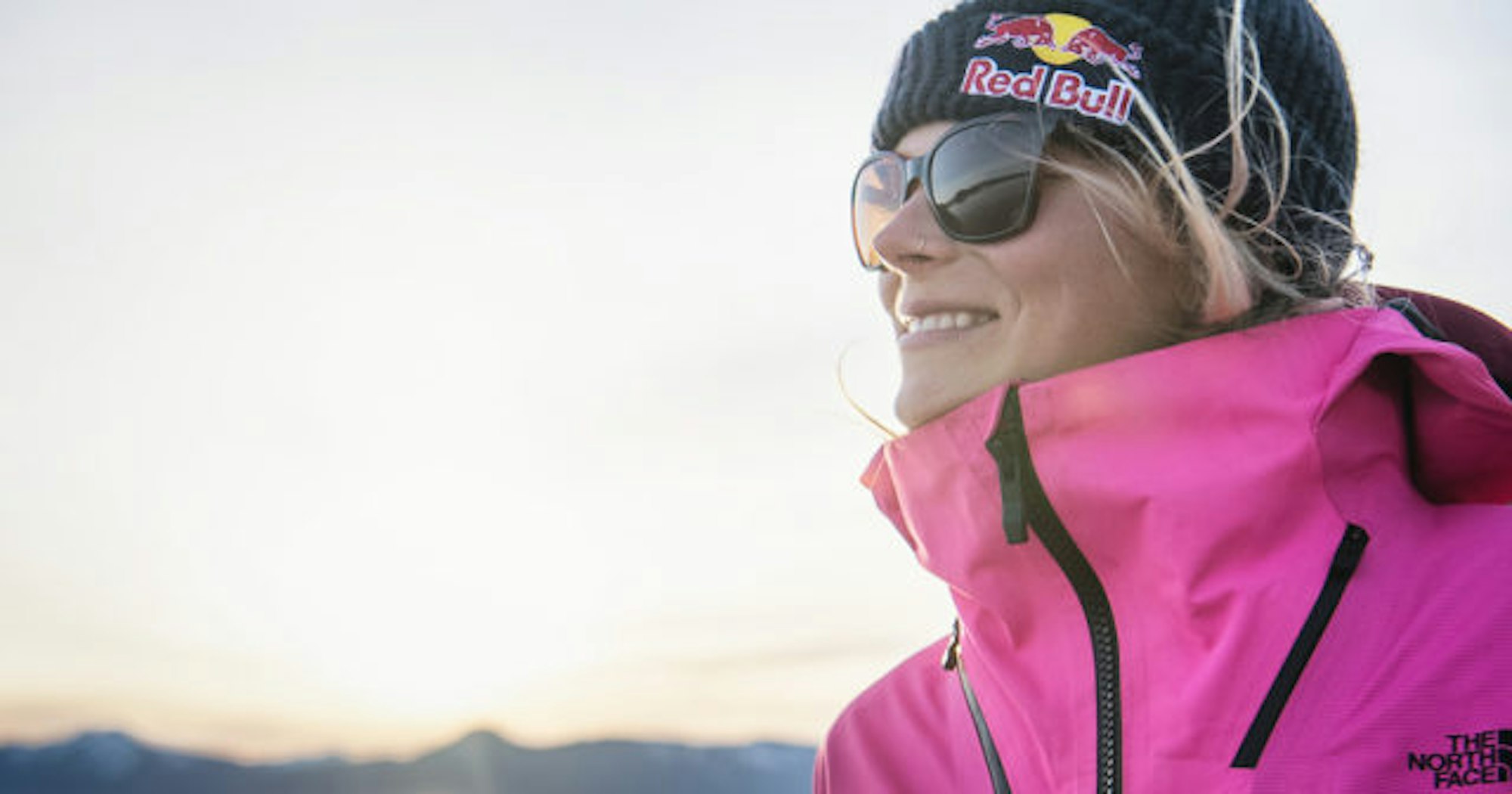
Before cruising at mach speed, Collinson finds time to ground herself in mediation. Photo: Nic Alegre
On a day that you’re going out to ride big lines in Alaska, can you tell me what the process is like?
[First], we’ll look over photos of the zone that we want to ski the night before, and we’ll get a game plan for the day of where we want to go and when. We usually wake up and do a weather check–if it’s blue, everyone starts rallying. Alaska’s unique because you can’t head out before it’s light out. As soon as the helicopter is legally allowed to lift off the ground [once the sun rises], we all need to be in it and ready, if there’s blue sky. But, my personal routine is I always meditate for 20 to 30 minutes on those mornings… I meditate, I do some breath work and I listen to some music and kind of get grounded.
Bring us along for the ride. What’s it like heading up in the helicopter with the objective of skiing an exposed line?
My mouth is going dry already just thinking about it. It’s funny… a lot of time is spent at the bottom, looking up at our lines, choosing which one we’re going to ski and talking each other through it. Once we get in the helicopter, it’s the end of preparation time. There’s the pre-prep, the prep and the actualizing what we’re going to do. [Once we’re] in the helicopter, it’s one last chance to look at our lines.
Sometimes, the perspective we get from the helicopter is a necessary one that we couldn’t get from the ground. It’s sort of a make-or-break moment of like: “Yes, I’m going to do this,” or, “No, I’m not going to go ski that.” [But], once I get dropped off, I’m usually starting to go over in my head what I’m about to do: visualizing it, orienting myself from a photo I took from down below.
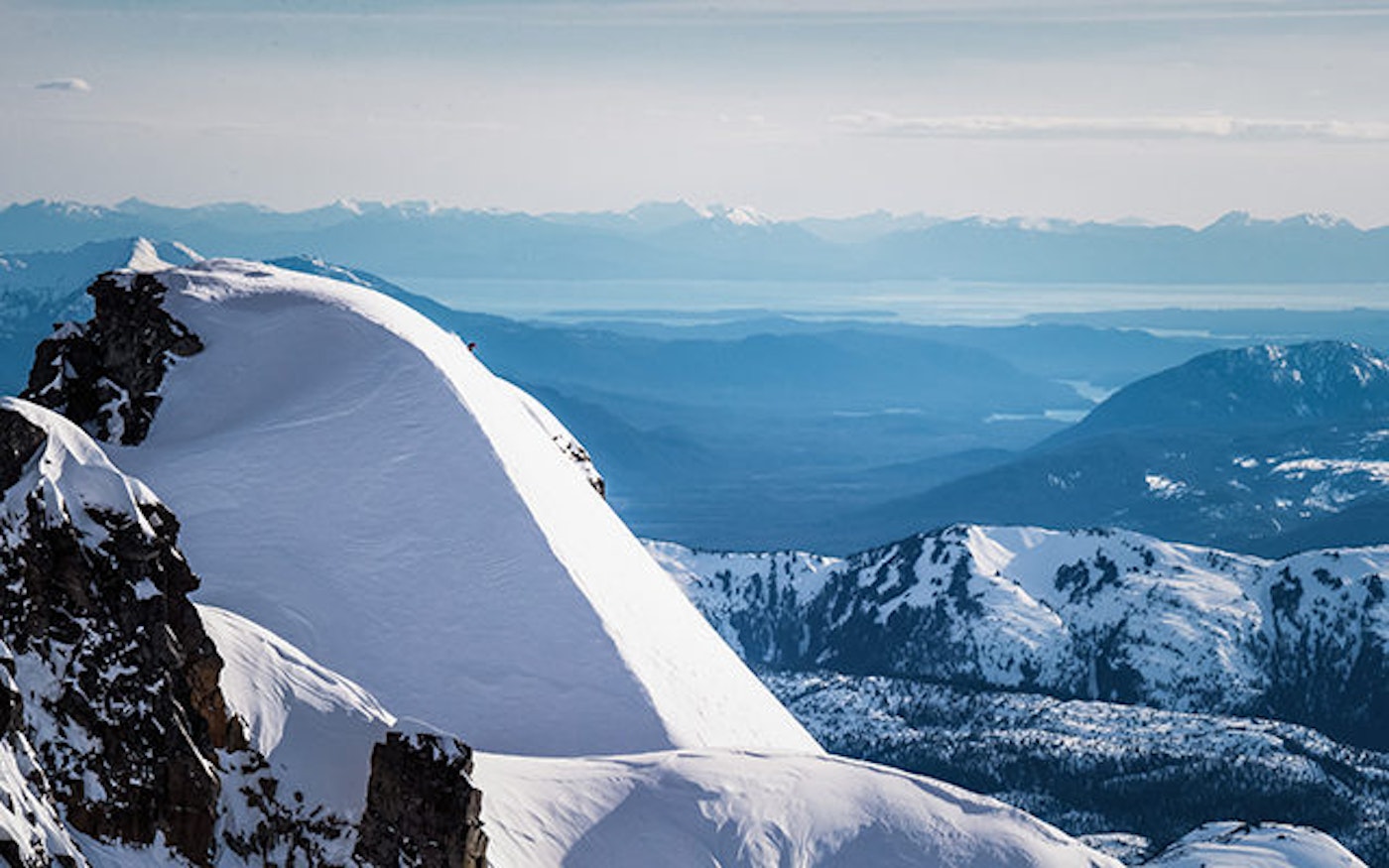
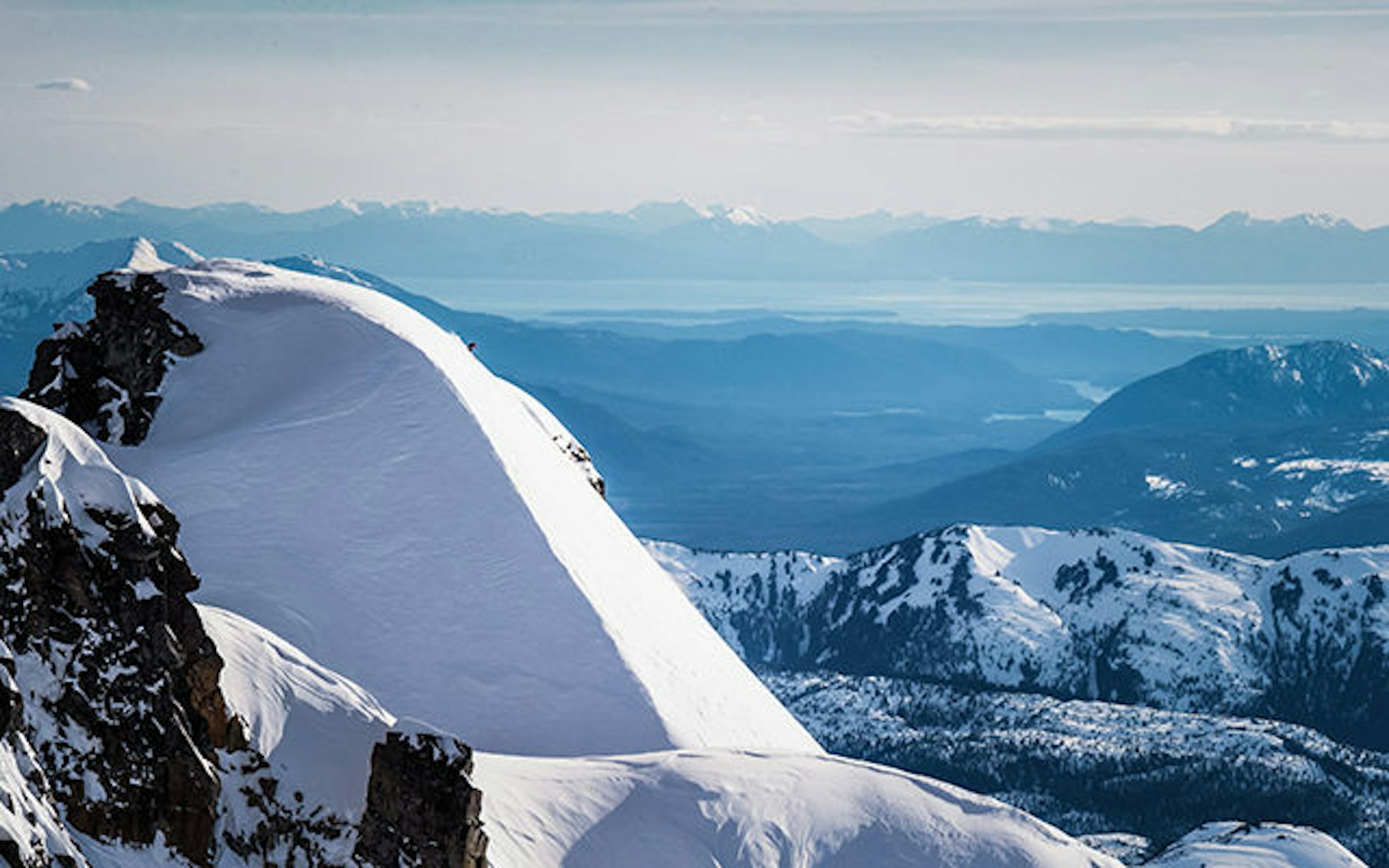
Do you usually visualize the whole line before you drop?
Yeah, there’s been so many studies—if you can’t visualize something, if you can’t imagine yourself actually doing it or being able to do it, usually, you can’t. When I’m on top, nerves going, hurrying to get ready, listen[ing] to the radio to make sure that I’m right on target… I get to a point where I’m like: “Okay, I’m maxed out on nervousness. I need to bring myself down a couple notches.”
So, I [ground myself] with deep breathing…taking in all of my surroundings. I’ll be on the ridge… and I’ll be like: “Holy shit, I’m on a ridge with these guys that I’ve been looking up to my whole life. I just got helicoptered up here. Like, look at this view!”
I give appreciation for Mother Nature… and I ask for her blessing for the line I’m about to ski. I have to think of it as like a co-creative dance—there’s my part and then there’s her part. So, I ask for her blessing and I know that whatever happens, I’m going to have the capacity to deal with it.
You mentioned before the similarities between skiing and meditating. How would you describe their differences?
When I’m meditating, if I can get to a place of stillness, it’s usually blissful and really relaxing. It’s like when you’re in a perfect temperature bath… where you just like—ooh—you just sink into it.
When I’m skiing it’s not that kind of relaxed stillness. It’s like the outside world is freeze-framed around me, I’m moving through the world as if time has stopped and I’m still aware of what I’m doing. But the stillness, if I’m on a really big line, has an intense quality to it almost like if somebody [yelled], “Freeze!” and I have to hold myself really still and really focused. For me, it’s thrilling, it’s exciting but it’s not easy. Underneath it all, I’m managing my fear level, always.

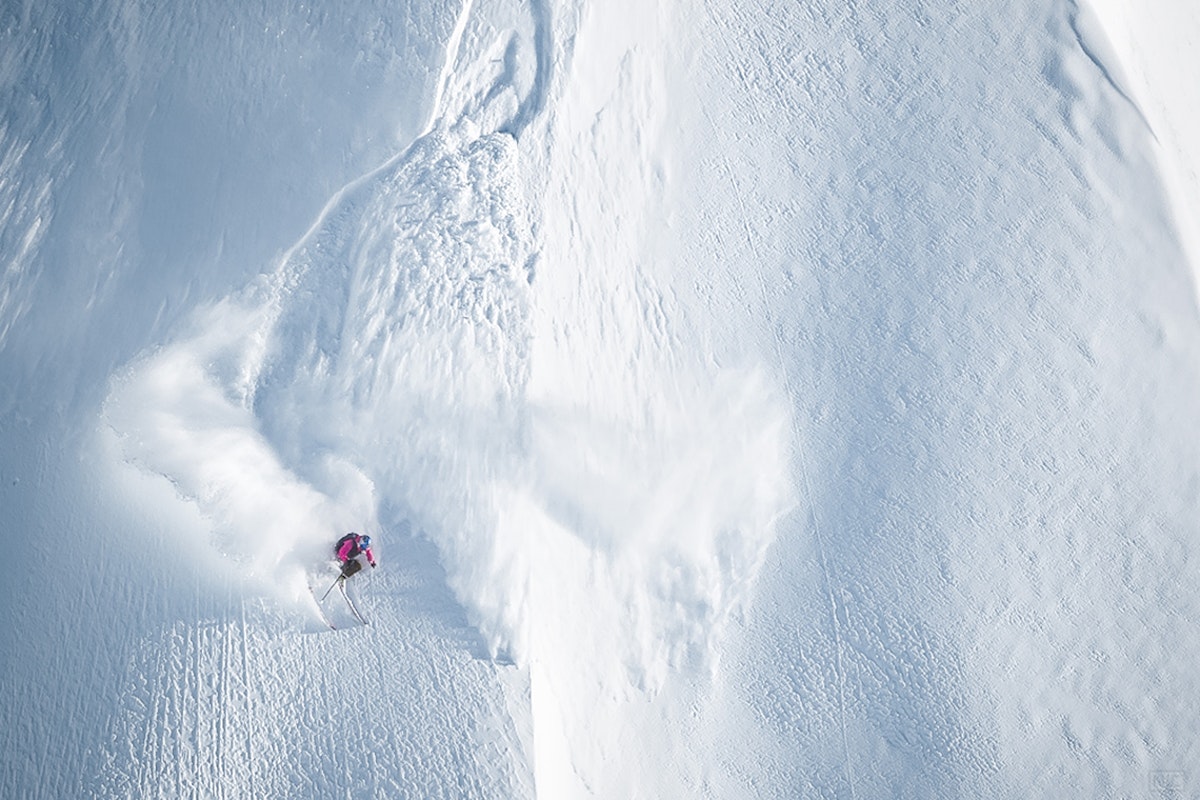

![[GIVEAWAY] Win a Head-to-Toe Ski Setup from IFSA](https://www.datocms-assets.com/163516/1765920344-ifsa.jpg?w=200&h=200&fit=crop)


![[GIVEAWAY] Win a Legendary Ski Trip with Icelantic's Road to the Rocks](https://www.datocms-assets.com/163516/1765233064-r2r26_freeskier_leaderboard1.jpg?auto=format&w=400&h=300&fit=crop&crop=faces,entropy)




![[GIVEAWAY] Win a Head-to-Toe Ski Setup from IFSA](https://www.datocms-assets.com/163516/1765920344-ifsa.jpg?auto=format&w=400&h=300&fit=crop&crop=faces,entropy)


